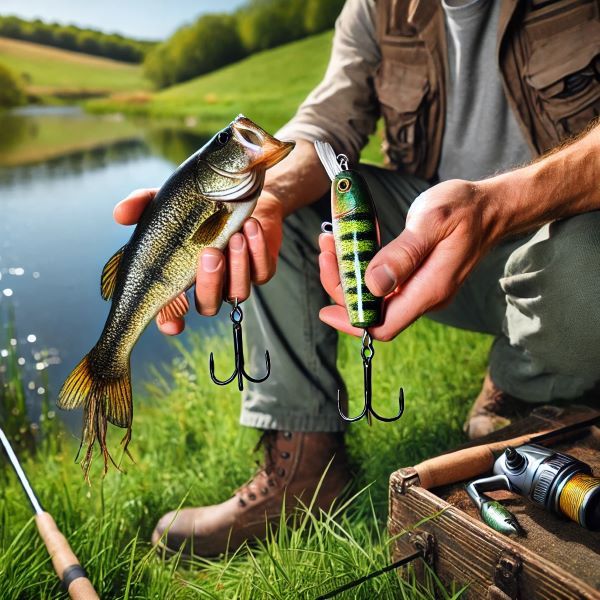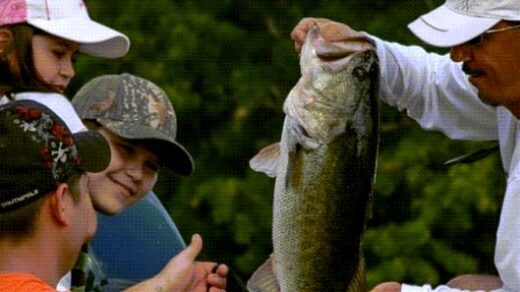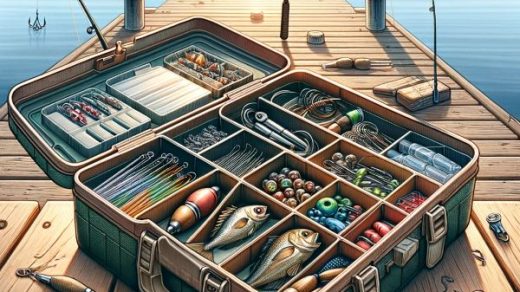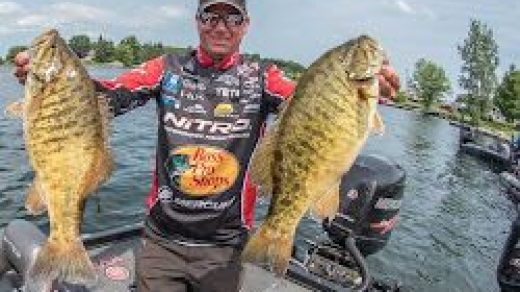Your Ultimate Guide to Fishing in Submerged Grass

Fishing in submerged grass presents a unique challenge and an exciting opportunity for anglers looking to land some impressive bass. Among the various techniques and lures available, the combination of squarebill and lipless crankbaits stands out for its effectiveness and versatility. This comprehensive guide will delve into why this combo works so well, how to use it, and the gear you’ll need to maximize your success. By the end of this blog, you’ll be equipped with the knowledge to tackle submerged grass like a pro.
Understanding the Squarebill and Lipless Crankbait Combo
Versatility
One of the primary reasons the squarebill and lipless crankbait combo is so effective is their versatility. Squarebill crankbaits are specifically designed to deflect off cover, making them ideal for fishing around submerged grass, rocks, and other underwater structures. This deflection helps prevent snagging and mimics the erratic movement of prey, which can trigger strikes from predatory fish.
On the other hand, lipless crankbaits can be fished at various depths and are particularly effective when ripped through grass. This technique involves pulling the lure quickly through the vegetation, creating vibrations and noise that attract fish. The ability to fish both lures at different depths and with different techniques provides a comprehensive approach to covering the entire water column.
Depth Coverage
Squarebill crankbaits typically run shallower, usually in the 2 to 6 feet range, depending on the design and retrieve speed. This makes them perfect for targeting bass that are lurking near the surface or just above the grass beds. The erratic action of a squarebill as it deflects off grass and other cover can entice even the most lethargic fish to strike.
Lipless crankbaits, however, can be used to target fish at various depths, making them highly versatile. By adjusting your retrieve speed and the weight of the lure, you can fish lipless crankbaits anywhere from just below the surface to deeper in the water column. This depth versatility is crucial when bass are not confined to a single layer and allows you to adjust your strategy based on their behavior and the conditions.
Reaction Strikes
Both squarebill and lipless crankbaits are excellent at triggering reaction strikes from bass. A reaction strike occurs when a fish instinctively strikes at a lure, often out of aggression or territorial defense, rather than hunger. The erratic action of a squarebill bouncing off cover simulates a distressed baitfish or crawfish, which can provoke a reaction strike.
Lipless crankbaits, with their tight wobbling action and rattling sound, are designed to attract fish through vibration and noise. When ripped through submerged grass, the sudden burst of speed and noise can trigger a bass’s predatory instincts, leading to a strike. This ability to provoke reaction strikes makes both lures highly effective, especially in pressured waters where fish might be more cautious.
Seasonal Effectiveness
The squarebill and lipless crankbait combo can be effective year-round, adapting to the changing behavior and location of bass throughout the seasons.
- Spring: As the water warms up in spring, bass move into shallower waters to spawn. Squarebills are particularly effective during this period, as they can be fished in the shallow areas where bass are preparing their nests. Lipless crankbaits are also effective in pre-spawn conditions when bass are actively feeding to prepare for spawning.
- Summer: During the hot summer months, bass often retreat to deeper, cooler waters during the day but may move into shallower areas to feed in the early morning and late evening. Lipless crankbaits can be used to target bass in deeper grass beds during the day, while squarebills can be used in the shallows during low light conditions.
- Fall: As the water cools in the fall, bass become more active and feed heavily to prepare for winter. Both squarebills and lipless crankbaits are effective during this period. Squarebills can be used to target bass in shallow waters where they are feeding on baitfish, while lipless crankbaits can cover more water and depth as bass move between feeding zones.
- Winter: In colder months, bass metabolism slows down, and they become less active. Fishing can be more challenging, but lipless crankbaits fished slowly along the bottom can still trigger bites. The tight wobble and slow fall of a lipless crankbait can entice lethargic bass to strike.
Imitation
Squarebills and lipless crankbaits come in various shapes, sizes, and colors, allowing anglers to mimic different types of prey. Squarebills often imitate baitfish or crawfish, which are common food sources for bass. Their design allows them to bounce off cover, mimicking the erratic movement of prey trying to escape predators.
Lipless crankbaits typically mimic shad or other small fish. Their slim profile and tight wobble resemble a fleeing baitfish, while the rattling sound adds an auditory cue that attracts fish from a distance. This variety in prey imitation can be advantageous when fishing submerged grass, as it increases the likelihood of matching the local forage and triggering strikes.
Techniques for Fishing Squarebill and Lipless Crankbaits in Submerged Grass
Using Squarebills
When fishing squarebills in submerged grass, focus on the edges and tops of grass beds. Cast your lure parallel to the grass line or into open pockets within the grass. Retrieve it steadily, allowing it to deflect off the vegetation. This deflection is key to triggering strikes, as it creates sudden changes in direction and speed that mimic fleeing prey.
Here are some additional tips for using squarebills in submerged grass:
- Change Retrieve Speed: Vary your retrieve speed to see what the fish respond to best. Sometimes a fast retrieve will trigger aggressive strikes, while a slower, more deliberate retrieve can be effective in colder water or when fish are less active.
- Pause and Go: Adding pauses to your retrieve can make your lure even more enticing. Stop reeling for a moment, then resume at a different speed. The sudden pause and restart can provoke a reaction strike.
- Use the Right Gear: A medium-heavy rod with a moderate action is ideal for fishing squarebills. This setup provides enough backbone to handle larger fish and enough flex to absorb the shock of the fish’s initial strike and the lure’s deflection off cover.
Employing Lipless Crankbaits
Lipless crankbaits excel in submerged grass when using a ripping technique. This involves casting the lure out and allowing it to sink to the desired depth. Once it’s there, retrieve it with a series of quick, upward jerks of the rod tip, followed by a brief pause to let the lure sink again. This motion causes the lure to dart up and down, creating vibrations and noise that attract fish.
Here are some tips for using lipless crankbaits in submerged grass:
- Vary Your Retrieve: Just like with squarebills, changing your retrieve speed and cadence can make a big difference. Experiment with fast, aggressive retrieves and slower, more deliberate ones to see what works best on any given day.
- Use the Ripping Technique: This technique is particularly effective when fishing thick grass. The sudden, erratic movement of the lure as it’s ripped through the vegetation can trigger reaction strikes from bass hiding in the grass.
- Match the Hatch: Pay attention to the size and color of the baitfish in the area and choose a lipless crankbait that closely matches them. This increases your chances of getting a strike, as it mimics the natural prey of the bass.
- Gear Recommendations: A medium-heavy rod with a fast action is typically best for fishing lipless crankbaits. The fast action allows for quick hooksets, while the medium-heavy power provides the strength needed to pull fish out of the grass.
Recommended Lures and Gear
When it comes to selecting specific lures, there are many options available across various price points. Here are some popular choices that have proven effective:
Squarebill Crankbaits:
- Lucky Craft BDS Series: Known for their high-quality construction and effective action, these squarebills are a favorite among many anglers. They come in a variety of sizes and colors to match different forage and fishing conditions.
- 6th Sense Mini Mag: This larger profile squarebill is ideal for targeting bigger bass. Its larger size and wide wobble make it stand out, especially in murky water or when fish are feeding on larger prey.
Lipless Crankbaits:
- Strike King Red Eye Shad: A staple in many tackle boxes, the Red Eye Shad is known for its versatility and effectiveness. It comes in a wide range of colors and sizes, making it easy to match the hatch in any fishing situation.
- Rat-L-Trap: Another popular choice, the Rat-L-Trap is famous for its loud rattles and tight wobble. It’s particularly effective in clear water and when fish are feeding aggressively.
Gear Recommendations:
- Rods: A medium-heavy rod with a moderate action is recommended for squarebills, while a medium-heavy rod with a fast action is ideal for lipless crankbaits. Look for rods in the 7 to 7.5-foot range for optimal casting distance and control.
- Reels: A baitcasting reel with a high gear ratio (6.4:1 or higher) is ideal for both types of crankbaits. The high gear ratio allows for quick retrieves and the ability to pick up slack line quickly, which is important for setting the hook and controlling fish.
- Line: Fluorocarbon line is often recommended for crankbait fishing because of its low stretch and sensitivity. A 12 to 17-pound test line is a good range to cover most situations. Fluorocarbon sinks, which helps keep your crankbaits at the desired depth, and its abrasion resistance is beneficial when fishing around grass and other cover.
Strategies for Success
Pay Attention to Conditions
The effectiveness of squarebill and lipless crankbaits can vary based on water conditions, weather, and the behavior of the fish. Here are some factors to consider:
- Water Clarity: In clear water, opt for natural and translucent colors that mimic the local forage. In stained or muddy water, brighter and more opaque colors can help your lure stand out.
- Light Conditions: During low light conditions such as dawn, dusk, or overcast days, lures with a bit of flash or a more pronounced rattle can be more effective. Under bright sunlight, more natural and subdued colors tend to work better.
- Temperature: Water temperature affects fish behavior significantly. In warmer water, faster retrieves and more aggressive techniques can be effective. In colder water, slower retrieves and more subtle presentations are often necessary.
Adjust Based on Feedback
One of the keys to successful fishing is being adaptable. Pay attention to the feedback you get from the fish and adjust your tactics accordingly. If you’re not getting bites, try changing your lure color, size, or retrieve speed. If you notice fish following but not striking, it might indicate the need for a different presentation or a switch between squarebill and lipless crankbaits.
Location, Location, Location
Finding the right spot to fish is half the battle. Submerged grass beds can be extensive, so focusing on key areas can improve your success rate:
- Points and Drop-offs: Bass often use these areas as ambush points. Cast your squarebill or lipless crankbait along the edges of these structures to entice strikes.
- Pockets and Holes: Look for openings in the grass where bass might be waiting to ambush prey. These can be prime spots for both types of crankbaits.
- Transitions: Areas where different types of vegetation meet, or where the grass ends and open water begins, can be hotspots for bass.
The Science Behind Reaction Strikes
Understanding the biology and behavior of bass can help you make more informed decisions on the water. Bass are opportunistic predators that rely on their lateral line system to detect vibrations and movement in the water. This sensory system is highly developed and allows them to pick up on the subtle vibrations produced by prey or lures.
Vibration and Noise
Both squarebill and lipless crankbaits generate vibrations and noise that mimic the sounds of baitfish or crawfish in distress. These cues can trigger a bass’s predatory instincts, even if they are not actively feeding. The deflection of a squarebill off cover and the rattling of a lipless crankbait are designed to maximize these sensory triggers.
Visual Cues
Bass have excellent vision, particularly in low-light conditions. The erratic movement of a squarebill and the flash of a lipless crankbait can catch their attention and provoke a strike. Using lures with contrasting colors or reflective finishes can enhance their visibility in different water conditions.
Aggression and Territorial Behavior
During certain times of the year, such as pre-spawn and post-spawn periods, bass can become highly territorial and aggressive. Lures that intrude into their space or simulate a potential threat to their nest can trigger defensive strikes. This is why squarebills and lipless crankbaits, with their aggressive actions and ability to cover water quickly, can be so effective.
Practical Tips for Maximizing Your Catch
Keep Your Hooks Sharp
Dull hooks can lead to missed strikes and lost fish. Regularly check the sharpness of your hooks and replace them if necessary. Sharp hooks penetrate more easily and increase your chances of landing fish.
Use the Right Knots
Using the right knots can make a big difference in your fishing success. The Palomar knot and the improved clinch knot are both reliable options for tying on crankbaits. These knots provide strong connections and are relatively easy to tie.
Maintain Your Gear
Regular maintenance of your rods, reels, and lures can extend their lifespan and ensure they perform optimally. Clean and lubricate your reels, check your rod guides for damage, and inspect your lures for any wear and tear that could affect their action.
Practice Casting Accuracy
Accurate casting is crucial when fishing around submerged grass. The ability to place your lure precisely where you want it can increase your chances of triggering a strike. Practice casting to targets in your yard or at a local park to improve your accuracy and control.
Stay Patient and Persistent
Fishing can be unpredictable, and success often requires patience and persistence. If you’re not getting bites, don’t get discouraged. Keep experimenting with different lures, retrieves, and locations until you find what works. Persistence pays off, and the effort you put in will be rewarded with more fish in the boat.
Conclusion
The combination of squarebill and lipless crankbaits is a powerful and versatile approach to fishing in submerged grass. Their ability to cover different depths, trigger reaction strikes, and adapt to various seasonal conditions makes them indispensable tools for any angler targeting bass. By understanding the unique strengths of each lure, employing the right techniques, and using the appropriate gear, you can maximize your success on the water.
Whether you’re a seasoned angler or just getting started, mastering this crankbait combo will give you a significant advantage. Remember to stay adaptable, pay attention to the feedback from the fish, and continuously refine your approach based on conditions and behavior. With practice and persistence, you’ll find yourself landing more and bigger bass in no time.
Happy fishing, and tight lines!




